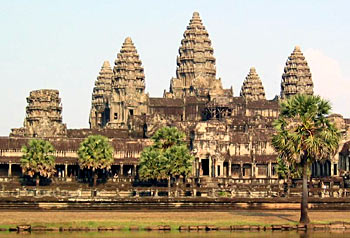 One of the major archaeological sources which offer valuable and authentic historical information is the monuments of the ancient period. Buildings, including temples, statues, pottery etc., come under this category. These are more significant from the cultural point of view as compared to the political view point. Moreover, these also mirror the economic situations of the country. Other facts like design and architectural pattern, types of raw materials and construction expertise can also be obtained from Monumental sources of Ancient Indian History. Monuments are of two kinds- Indian and Foreign.
One of the major archaeological sources which offer valuable and authentic historical information is the monuments of the ancient period. Buildings, including temples, statues, pottery etc., come under this category. These are more significant from the cultural point of view as compared to the political view point. Moreover, these also mirror the economic situations of the country. Other facts like design and architectural pattern, types of raw materials and construction expertise can also be obtained from Monumental sources of Ancient Indian History. Monuments are of two kinds- Indian and Foreign.
Indian Monumental Sources of Ancient Indian History
As regard to Indian monuments, they provide very constructive principle in restructuring the history of ancient India. Archaeological excavations in the North eastern part of India have brought to light the remains of a highly developed urban civilization in ancient India. The excavations of Harappa, Mohenjodaro, Kalibangan, Lothal and Taxila have furnished pretty valuable and authentic historical discoveries, which were so far unknown to the world. The discovery of the Indus Valley Civilisation has established the existence of a civilisation preceding the Aryans. The excavations of Taxila have generated a lot of information about the Kushans and the Gandhara School of Art. The wooden remains found in the excavations of Pataliputra depicts that in the prehistoric period, the use of wood was more popular and furnishes constructive historical material about the Mauryans. Moreover the various temples and stupas, like those found in Sanchi and Bharhut stupas, and other numerous temples in Southern India, provide an idea about the educational and social life.
 Moreover, various artefacts and the exquisite paintings like those found on the Ajanta caves, pictorial tablets and relics of Harappa, and those in Asokan era are also considered as useful resources. The Copper Statue of Buddha in Nalanda, Bricks Temple in Kanpur district and Rock Temple in Jhansi district, are some of the instances, which reverberates the progression of art and culture in ancient India.
Moreover, various artefacts and the exquisite paintings like those found on the Ajanta caves, pictorial tablets and relics of Harappa, and those in Asokan era are also considered as useful resources. The Copper Statue of Buddha in Nalanda, Bricks Temple in Kanpur district and Rock Temple in Jhansi district, are some of the instances, which reverberates the progression of art and culture in ancient India.
Foreign Monumental Sources of Ancient Indian History
Besides this, monuments in foreign countries have also proved helpful in restructuring the history of prehistoric India. The illustrations of the development of Indian art and culture are seen in Java, Sumatra and Cambodia The Angkor-Vat in Cambodia, Borobodur and Shiva temples of `Dhinda Pathra` in Java are evidences that Indians had founded colonies in these places. A temple and some statues discovered in Malaya confirm that the dwellers of this place were Hindus and worshipped Shiva, Parvati, Ganesh and Nandi. Same is the case with the islands Bali and Borneo. These things are authentications of the fact that in prehistoric India, the country was very sophisticated in art and culture and had founded its colonies in far-off countries.



















